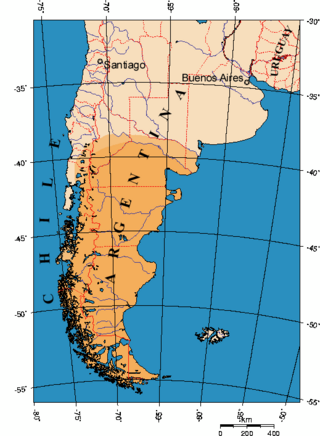
Patagonia is a geographical region that encompasses the southern end of South America, governed by Argentina and Chile. The region comprises the southern section of the Andes Mountains with lakes, fjords, temperate rainforests, and glaciers in the west and deserts, tablelands and steppes to the east. Patagonia is bounded by the Pacific Ocean on the west, the Atlantic Ocean to the east, and many bodies of water that connect them, such as the Strait of Magellan, the Beagle Channel, and the Drake Passage to the south.
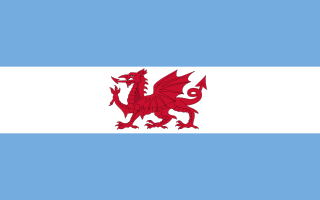
Y Wladfa, also occasionally Y Wladychfa Gymreig, refers to the establishment of settlements by Welsh immigrants in Patagonia, beginning in 1865, mainly along the coast of the lower Chubut Valley. In 1881, the area became part of the Chubut National Territory of Argentina which, in 1955, became Chubut Province.

Chubut is a province in southern Argentina, situated between the 42nd parallel south, the 46th parallel south, the Andes range to the west, and the Atlantic ocean to the east. The province's name derives from the Tehuelche word chupat, meaning "transparent," their description of the Chubut River.
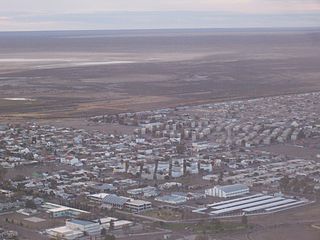
Rawson is the capital of the Argentine province of Chubut, in Patagonia. It has 24,616 inhabitants in 2010, and it is the chief town of the Rawson Department.

Trelew is a city in the eastern part of the Chubut Province of Argentina. Located in Patagonia, the city is the largest and most populous in the low valley of the Chubut River, with 97,915 inhabitants as of 2010. The Trelew municipality is part of the Rawson Department, whose capital, Rawson, is also the provincial capital.

Puerto Madryn, also known as Madryn, is a city in the province of Chubut in Argentine Patagonia. It is the capital of the Viedma Department, and has about 93,995 inhabitants according to the last census in 2010.
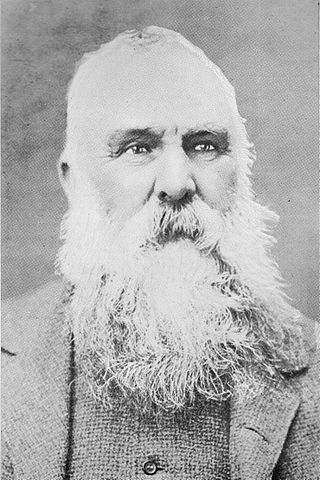
Michael Daniel Jones was a Welsh Congregationalist minister and principal of a theological college, but is best remembered as a founder of the Welsh settlement in Patagonia known as Y Wladfa and as one of the fathers of modern Welsh nationalism.

Esquel is a town in the northwest of Chubut Province in Argentine Patagonia. It is located in Futaleufú Department, of which it is the government seat. The town's name derives from one of two Tehuelche words: one meaning "marsh" and the other meaning "land of burrs", which refers to the many thorny plants including the pimpinella, and the other meaning herbaceous plants whose fruits, when ripe, turn into prickly burrs that stick to the animals' skins and wool or people's clothes as a way of propagation.

The Tehuelche people, also called the Aónikenk, are an indigenous people from eastern Patagonia in South America. In the 18th and 19th centuries the Tehuelche were influenced by Mapuche people, and many adopted a horseriding lifestyle. Once a nomadic people, the lands of the Tehuelche were colonized in the 19th century by Argentina and Chile, gradually disrupting their traditional economies. The establishment of large sheep farming estates in Patagonia was particularly detrimental to the Tehuelche. Contact with outsiders also brought in infectious diseases ushering deadly epidemics among Tehuelche tribes. Most existing members of the group currently reside in cities and towns of Argentine Patagonia.
Palaeospheniscus bergi is a species of the extinct penguin genus Palaeospheniscus. It stood about 60 to 75 centimetres high in life, or somewhat smaller on average than the extant African penguin.

Mimosa was a clipper ship best known for carrying the first Welsh emigrants to South America in 1865.

La Trochita, in English known as the Old Patagonian Express, is a 750 mm narrow gauge railway in Patagonia, Argentina using steam locomotives. The nickname La Trochita means literally "The little gauge" though it is sometimes translated as "The Little Narrow Gauge" in Spanish while "trocha estrecha", "trocha angosta" in Argentina, is often used for a generic description of "narrow gauge."

Patagonian Welsh is a variety of the Welsh language spoken in Y Wladfa, the Welsh settlement in Patagonia, Chubut Province, Argentina. The decimal numeral system used in Modern Welsh originated in Patagonia in the 1870s, and was subsequently adopted in Wales in the 1940s as a simpler counterpart to the traditional vigesimal system, which still survives in Wales.

Eluned Morgan, was a Welsh-language author from Patagonia. She was raised in Y Wladfa, a Welsh colony in Patagonia, and was taught to speak both Welsh and Spanish. Her father eventually enrolled her in Dr Williams' School in Wales, where she had to learn the English language. She led student protests against the school's English-only policy, which prohibited the use of Welsh by its students.

The Central Chubut Railway was a British-owned company that built and operated a 1,000 mmmetre gauge railway line in the Argentine province of Chubut in the Patagonia region at the end of the 19th. century.
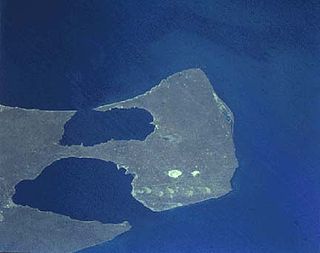
Golfo Nuevo is a body of water formed by the Península Valdés and Punta Ninfas in the province of Chubut in the Argentine Patagonia. It is located 650 miles (1,050 km) southwest of Buenos Aires, Argentina. Puerto Madryn is its major seaport.

The National University of Comahue is an Argentine national university with branches in the provinces of Neuquén, Río Negro and Chubut, with a centre in the city of Neuquén and units in Viedma, Bariloche, San Martín de los Andes, Cipolletti, Zapala, Allen, General Roca, Choele Choel, San Antonio Este, Villa Regina, Esquel, Puerto Madryn and Trelew. It is the largest public university in Argentine Patagonia.
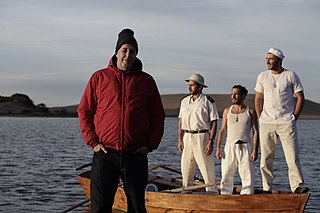
Ricardo Preve is an Argentine filmmaker, photographer, and activist. Preve began his film career in the early 2000s as an associate producer on some documentaries. Since then, he has worked as a director, producer or scriptwriter in nearly thirty productions for film and television, including The Patagonian Bones (2015) and Coming Home (2019), both of which have won awards and recognition at international festivals. Preve is the owner of the audiovisual production companies Ricardo Preve Films LLC and Esto del Cine SRL.

The Comodoro Rivadavia and Colonia Sarmiento Railway was an Argentine railway company that built and operated a broad gauge line that connected the port of Comodoro Rivadavia with Colonia Sarmiento in Chubut Province. The FCCRCS -belonging to Argentine State Railway- also connected to Central Chubut Railway.

The Gaiman Formation, in older literature also referred to as Patagonian Marine Formation, is a fossiliferous geologic formation of the Peninsula Valdés Basin in the eastern Chubut Province of northwestern Patagonia, eastern Argentina.





















